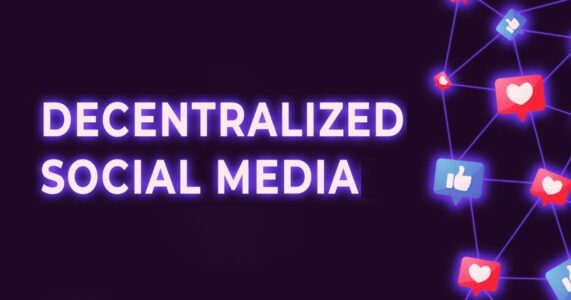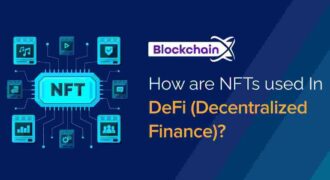The internet is changing once again—and this time, it’s personal. For over a decade, social media giants like Facebook, Twitter (now X), and Instagram have defined how we connect, communicate, and consume content. But their dominance has come with a cost: centralized control, opaque algorithms, and limited user ownership. Enter Web3 social platforms — a new wave of decentralized networks that aim to return power, data, and influence to the users themselves.
This isn’t just another tech buzzword. It’s a cultural and technological revolution reshaping the very fabric of digital interaction. So, what exactly are Web3 social platforms, and how are they transforming the way we communicate in the decentralized era? Let’s break it down.
🌐 From Web2 to Web3: A Shift in Power
To understand the promise of Web3 social media, we first need to recognize the shortcomings of its predecessor.
Web2, the era dominated by centralized platforms, gave users free access to global communication but demanded something in return — their data. Companies like Meta and Google built empires by monetizing personal information, preferences, and behavior patterns. The users became the product, and control over speech and monetization rested in the hands of a few corporate giants.
Web3, on the other hand, introduces a paradigm shift: ownership, transparency, and decentralization. Powered by blockchain technology, Web3 platforms allow users to own their data, content, and even their digital identities. Instead of relying on intermediaries, creators and users interact directly—often using cryptocurrency or tokens as part of the ecosystem.
In short, Web3 hands the keys of the internet back to its users.
💬 What Are Web3 Social Platforms?
Web3 social platforms are decentralized alternatives to traditional social media networks. Built on blockchain or distributed ledger technology, they enable users to:
- Own their data rather than surrendering it to corporate servers.
- Earn rewards for engagement, posting, or content creation through tokens or NFTs.
- Control their identities using blockchain-based authentication systems.
- Engage freely without fear of censorship or arbitrary platform bans.
Unlike Web2’s “walled gardens,” Web3 platforms are interoperable—users can take their followers, data, and even assets from one platform to another. This idea of “portability” redefines what it means to be a digital creator or influencer.
Some notable examples include:
- Lens Protocol: A decentralized social graph where users control their profiles and posts via NFTs.
- Farcaster: A Web3-native social network emphasizing user sovereignty and open data.
- Mastodon: Though technically Web2.5, it operates on a federated model that decentralizes control.
- Mirror.xyz: A blockchain-based publishing platform where writers can monetize directly through tokens.
⚡ The Core Principles Driving Web3 Social Platforms
At the heart of this new social paradigm are a few transformative ideas:
1. User Ownership and Control
In Web3, your profile, content, and followers belong to you, not a platform. Blockchain ensures immutability and portability, so even if a platform shuts down, your digital presence remains intact.
2. Monetization Without Middlemen
Through tokenomics, creators can earn directly from their communities. Likes, tips, and subscriptions can all be converted into crypto rewards, creating a creator economy without gatekeepers.
3. Censorship Resistance
Because content is stored on decentralized networks, no single entity can unilaterally remove posts or ban users. This promotes freedom of expression, though it also raises questions about moderation and accountability.
4. Community Governance
Many Web3 platforms operate under Decentralized Autonomous Organizations (DAOs), where users vote on policies, updates, and platform direction. Governance tokens give stakeholders real influence over how the network evolves.
🧠 Why Decentralized Social Media Matters
Decentralization isn’t just about technology—it’s about trust.
In traditional social media, algorithms dictate what users see, often amplifying sensationalism and suppressing nuance. Content creators are at the mercy of ever-changing monetization rules, and privacy breaches have become commonplace.
Web3 challenges this model by introducing transparency.
Smart contracts make content rules visible, token rewards are governed by clear protocols, and community members can verify decisions publicly. The result? A trustless yet trustworthy ecosystem—where influence is earned, not engineered.
Moreover, Web3 social media aligns with the growing demand for digital sovereignty—the idea that individuals should control their online identity and assets. It’s a natural progression in an age where people want to be more than just “users.”
🪙 The Rise of the Tokenized Creator Economy
Perhaps the most exciting development within Web3 social platforms is the rise of the tokenized creator economy.
Instead of relying on ads or third-party sponsors, creators can issue their own social tokens or NFTs, allowing fans to invest directly in their success. This turns audiences into stakeholders, forging deeper engagement and shared growth.
For instance:
- A musician can release limited-edition NFT albums directly to fans.
- A writer on Mirror.xyz can crowdfund their article and share future earnings.
- A gamer on Web3 platforms can earn tradable tokens for in-game achievements.
This democratization of monetization redefines influence—transforming creators from algorithm-chasers into entrepreneurs of their own digital ecosystems.
⚠️ The Challenges Ahead
Despite the buzz, Web3 social media is still in its early stages. Several challenges remain before it can rival the reach and convenience of Web2 giants.
1. User Experience (UX)
Blockchain interfaces can be intimidating. Managing wallets, gas fees, and keys isn’t as seamless as logging into Twitter or TikTok.
2. Scalability and Speed
Public blockchains often face congestion, leading to slow transactions or high costs—obstacles for mass adoption.
3. Content Moderation and Misinformation
Decentralization makes censorship difficult—but it also complicates moderation. Balancing free speech with community safety remains a delicate act.
4. Network Effects
Social media thrives on users, and attracting large audiences away from established platforms is no small feat. Without network effects, even the most innovative projects can struggle to gain traction.
🌍 Opportunities: A New Digital Renaissance
While challenges persist, the opportunities Web3 presents are game-changing.
- Empowered Users: No more shadow bans or data exploitation—users have full control.
- Authentic Communities: Decentralized spaces encourage genuine engagement rather than algorithmic popularity contests.
- Interoperable Identities: Carry your reputation, achievements, and following across multiple platforms.
- Decentralized Influence: Brands and influencers can build transparent, direct relationships with audiences without intermediaries.
Web3 isn’t just creating new platforms; it’s redefining how trust, creativity, and influence operate online.
🔮 The Future of Web3 Social Media
The shift toward decentralized social networks isn’t a question of if—it’s a question of when. As blockchain infrastructure matures, UX improves, and awareness grows, Web3 social platforms could become the next digital frontier.
Imagine a world where your posts are NFTs, your followers are token holders, and your data belongs solely to you.
That’s not a distant dream—it’s the roadmap of Web3.
As we stand at the crossroads between centralization and decentralization, one thing is clear: the future of communication is community-owned, transparent, and unstoppable.
🧭 Final Thoughts
Web3 social platforms represent a revolution in how humans connect online. They’re not just rewriting the rules of social interaction—they’re rewriting the ownership model of the internet itself.
While mainstream adoption will take time, the momentum is undeniable. From creators seeking autonomy to users demanding privacy, the world is ready for a more equitable, decentralized digital landscape.
In the next decade, influence will no longer belong to platforms—it will belong to people.










